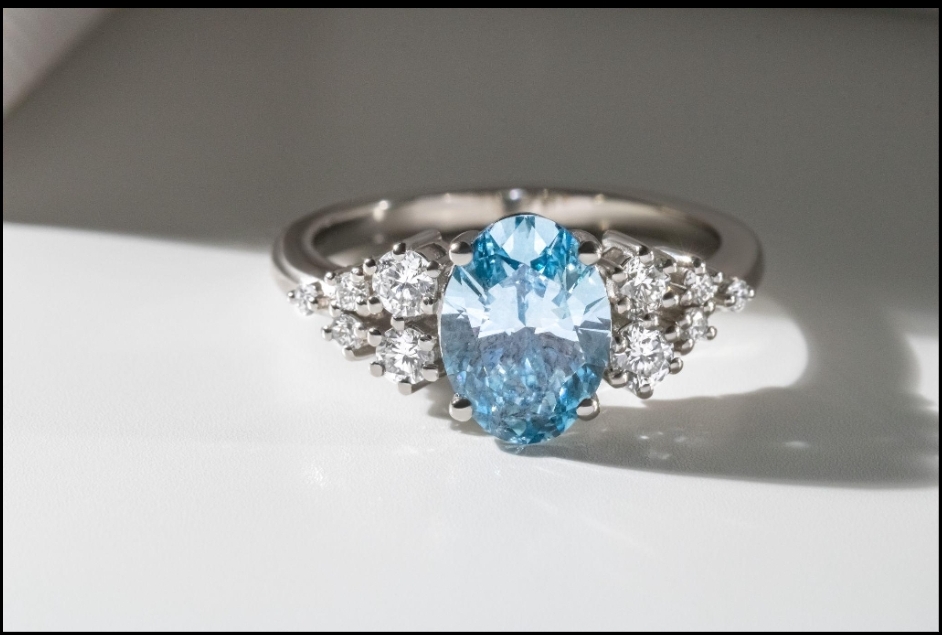Diamonds, the peak of rarity and beauty, have captivated human attention for generations. Blue colored diamonds stand out as exceptional riches, prized for their stunning color and scarcity. However, in a market saturated with imitations and improvements, recognizing genuine blue diamonds from their mimicked counterparts can be difficult. Unraveling the mystery behind these valuable gems necessitates a keen eye and an understanding of the essential traits that distinguish their authenticity.
The Rarity
Blue diamonds’ attractive color is due to the presence of trace elements, chiefly boron, within their crystalline structure. This distinct chemical composition gives them a stunning azure tint, ranging from delicate sky blues to deep, velvety tones suggestive of the ocean depths. However, real blue-colored diamonds are extremely rare, accounting for only a small percentage of global diamond output. Their scarcity makes them highly desirable to collectors and connoisseurs alike, increasing their value and demand. For those looking to purchase such rare diamonds, a Blue Nile review can offer helpful insights into the quality and pricing of blue diamonds in the market.
Grading and Certification
One of the most reliable methods to ascertain the authenticity of a blue diamond is through proper grading and certification. Reputable gemological laboratories such as the Gemological Institute of America (GIA) employ rigorous standards and advanced testing techniques to evaluate diamonds’ authenticity and quality. When purchasing a blue diamond, insist on obtaining a grading report from a trusted laboratory. This document provides vital information about the diamond’s color, clarity, cut, and carat weight, along with any indications of treatments or enhancements.
Assessing Color
The color of a blue diamond is a key sign of its legitimacy and worth. Genuine blue colored diamonds have a constant, evenly distributed tint across the stone, with no hint of gray or green overtones. Inspect a blue diamond’s color under different lighting settings to establish its legitimacy. Natural blue diamonds frequently exhibit a distinct fluorescence, generating a slight blue glow when exposed to UV light. However, it is important to note that fluorescence does not guarantee a diamond’s legitimacy, but rather acts as an extra factor to consider.
Clarity and Inclusions
Blue colored diamonds, like all diamonds, may contain intrinsic flaws known as inclusions, which can impair their clarity and transparency. While immaculate blue diamonds are extremely rare, tiny inclusions are relatively uncommon and do not necessarily reduce the stone’s value. Simulated blue diamonds, such as cubic zirconia or moissanite, may not have the natural defects that genuine diamonds do. As a result, a close analysis of the stone under magnification might reveal obvious evidence of authenticity, such as natural growth patterns and distinct inclusions.
Consideration of Cut and Carat Weight
The cut and carat weight of a blue diamond are also important factors to evaluate its legitimacy and worth. Genuine blue diamonds are usually cut to maximize their color intensity and brightness while keeping as much of the rough stone’s carat weight as possible. However, counterfeit blue diamonds may have uneven or poorly performed cuts intended to simulate the appearance of actual diamonds. Furthermore, be aware of blue diamonds marketed at extremely low costs, as genuine specimens attract higher prices due to their scarcity and popularity.
Finally
Recognizing genuine blue diamonds from simulated counterparts requires a mix of expertise, careful observation, and reliance on credible grading and certification. By learning the distinguishing qualities of genuine blue diamonds, enthusiasts, and collectors may easily traverse the market and purchase these extraordinary treasures with assurance and admiration for their unmatched beauty.






